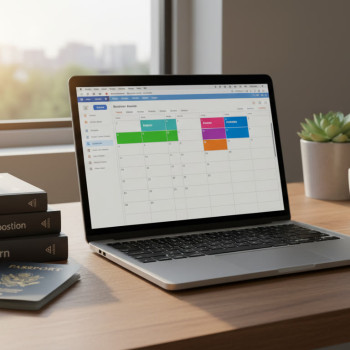So You Got Your AP Score Report—Now What?
First off: breathe. Seeing a stack of numbers and tables after months of studying can feel like opening a secret code. AP Score Reports are full of useful information, but they also contain a few traps for the unwary. This guide walks you through the parts that actually matter, how colleges and AP teachers interpret the numbers, and practical steps you can take next—including how targeted, 1-on-1 guidance or tailored study plans (like those offered by Sparkl) can turn this data into clear action.

What’s in an AP Score Report? Breaking It Down
AP Score Reports are designed to give you a snapshot of how you performed on the exam, how your performance compares to other students, and sometimes how your college might view those scores. Reports vary a bit by subject, but most contain several consistent elements:
- AP Exam Score (1–5): The headline number that many colleges use when deciding credit or placement.
- Section Scores or Subscores: Many exams (especially those with multiple-choice and free-response sections) break performance into parts to show where you excelled or struggled.
- Percentiles or Score Distributions: These show how your performance compares to students worldwide or nationwide.
- Skill or Topic-Level Feedback: For some subjects, you’ll see how you did across specific topics or skills (e.g., evidence vs. analysis in AP English).
- College Credit/Placement Notes: A reminder that credit policies vary by institution—your report does not guarantee credit.
Why Each Part Matters
Not all parts are equally important for every student. The composite 1–5 score is the clearest, simplest indicator colleges use. But the section scores and topic breakdowns are where the real growth plan lives. If you scored a 4 overall but your free-response skills lagged behind multiple choice, you know exactly where to focus your next practice sessions.
Decoding the 1–5 Scale: What Do Those Numbers Mean?
The AP scale (1 through 5) is intentionally simple on the surface, but it reflects a range of mastery:
- 5 — Extremely well qualified: You demonstrated mastery of college-level material.
- 4 — Well qualified: Strong performance; many colleges award credit or placement.
- 3 — Qualified: Acceptable demonstration of college-level knowledge; some colleges accept 3 for credit.
- 2 — Possibly qualified: Below typical college credit thresholds but still valuable as learning evidence.
- 1 — No recommendation: Indicates a need for more preparation; the experience still matters.
Remember: a “3” is not a failure. Colleges differ widely on whether they grant credit for 3s or require a 4 or 5. A 3 may give you placement or waiver of a requirement at some schools and no credit at others—so always check specific college policies.
Practical Example
Imagine you earned a 4 on AP Statistics. Many public universities might grant you an introductory statistics waiver or college credit; a private liberal arts college might require a 5 for credit but still allow placement into a higher-level course. That flexibility is why your application package—grades, essays, course rigor—matters alongside AP scores.
Section Scores and Topic Breakdowns: The Roadmap for Improvement
Section scores show the mechanics behind your composite number. They help you answer two crucial questions: “What did I do well?” and “What should I fix first?”
How to Read Section-Level Feedback
- Compare relative strengths: If one section is consistently higher, lean into that skill while shoring up weaker areas.
- Look for patterns: Are you losing points on time management, clarity of argument, or data interpretation?
- Use topic tags: Many reports show topic-level performance. Treat those like tiny quizzes telling you the exact chapters to reread.
For example, an AP Biology report that shows weaker performance on ecology topics suggests targeted review sessions on that content, not a total curriculum reset.
Percentiles, Distributions, and What They Mean for You
Percentiles contextualize your performance: scoring in the 80th percentile means you did better than 80% of test-takers. This is motivating, but remember percentiles are comparative—not absolute measures of mastery. A lower percentile in a widely taken subject doesn’t mean you’re unprepared; it just situates you among a large, often highly prepared group of students.
Use Percentiles Wisely
- Use percentile data to benchmark growth over time (year-to-year or exam-to-exam).
- Don’t let percentiles overshadow actionable feedback—section weaknesses are where you get the most mileage for improvement.
How Colleges Use AP Scores: Credit, Placement, and Admissions
Colleges use AP scores in three main ways:
- Credit: Granting course credits for specific AP scores, which can reduce total credits needed for graduation.
- Placement: Allowing you to skip introductory classes and enroll in more advanced courses.
- Admissions: Demonstrating rigor on your transcript—AP classes and exams show you challenged yourself.
Which path your score opens depends entirely on the college’s policy. A single AP score can mean full credit at one school, advanced placement at another, and no credit at a third.
Table: Typical College Responses to AP Scores (Illustrative)
| AP Score | Typical College Response | What This Might Let You Do |
|---|---|---|
| 5 | Most colleges grant credit and/or advanced placement. | Skip intro course, place into next-level course, earn credits. |
| 4 | Many colleges grant credit or placement; others grant placement only. | Possibly enroll in more advanced classes, earn some credits. |
| 3 | Some colleges grant credit; many grant placement only or no credit. | May fulfill prerequisites or allow course substitution at some schools. |
| 1–2 | Rarely grant credit; still valuable for learning and future preparation. | Serves as evidence of rigor; useful for future growth plans. |
Note: This table is illustrative. Always confirm with each college’s official AP credit policy before planning your schedule.
Interpreting Your Report as a Student: A Step-by-Step Action Plan
Receiving your score report is an opportunity. Here’s a simple process to convert numbers into a strategy.
Step 1: Take an Honest Read
- Note your overall score and the section-level details.
- Write down three things you did well and three things you could improve.
Step 2: Match Scores with Your Goals
- If your goal is college credit, identify the colleges where your score will count.
- If your goal was personal mastery or readiness for a major, focus on skills and knowledge gaps.
Step 3: Make a Targeted Study Plan
Use the topic breakdown to build a focused plan. Spending time on high-yield weaknesses (for example, long-answer structure, experiment design, or data interpretation) pays off faster than re-reading entire textbooks.
Step 4: Get Feedback and Practice Strategically
- Do timed practice free-responses with self-scoring rubrics.
- Seek targeted feedback: a teacher, tutor, or a service offering tailored study plans can zero in on your weak spots.
Personalized tutoring—such as Sparkl’s 1-on-1 guidance and expert tutors—can be especially useful here. A tutor can interpret section scores and design practice sessions that mimic the exam while building confidence.
Should You Retake an AP Exam?
Deciding to retake depends on your goals, timeline, and the size of the gap between your current score and the score you need.
Questions to Ask Yourself
- Will a higher score change college credit or placement decisions for the schools you’re applying to?
- Can you realistically improve the weak areas identified in your report before the next exam?
- Are you balancing retake efforts with other academic or extracurricular priorities?
If a retake makes sense, build a focused preparation calendar and consider targeted resources such as topic-specific practice tests, timed sections, and one-on-one coaching to reinforce weak areas.
How to Talk to Colleges About Your AP Scores
Colleges don’t usually require explanation for AP scores, but there are times when context matters—especially if your AP transcript includes a mix of scores that seem inconsistent with your coursework or if extenuating circumstances affected your performance.
When to Provide Context
- Medical or personal issues affected your testing window.
- You improved dramatically on later exams or in class performance—show that trajectory.
- Your school offers unusually rigorous coursework that isn’t apparent from grades alone.
If you decide to provide context, keep it concise and factual. Use your counselor or an optional essay to give admissions officers a clear picture without making excuses.
Using Your AP Report to Build a Better Study System
Beyond retakes, AP Score Reports can be a training tool for college-level learning habits. Here are practical, long-term habits to build on your report’s insights:
- Daily micro-practice: Ten focused minutes on a weak subtopic beats one long cramming session.
- Evidence log: For writing or analysis-based subjects, keep a short notebook of evidence types and how you used them—perfect for sharpening free-response skills.
- Timed mini-exams: Build endurance with short, timed segments that replicate exam pressure.
- Regular check-ins: Weekly reviews of progress—adapt your plan as the data changes.
These are the exact kinds of strategies that personalized tutoring programs translate into day-to-day plans. Sparkl’s AI-driven insights and expert tutors, for example, can identify which micro-practices will move the needle fastest for your profile.
Real-World Examples: Turning Reports into Wins
Here are two short stories that show how thoughtful interpretation leads to better outcomes.
Case 1: The Gradual Climber
Jenna scored a 3 on AP Chemistry with low scores on laboratory and data analysis prompts. Instead of retaking the entire exam, she did weekly lab-design practice, partnered with a classmate for data interpretation drills, and worked with a tutor to practice rubric-driven writing. Her next year, she submitted a 4—enough for placement into an advanced college lab—saving her a semester of introductory courses.
Case 2: The Strategist
Marcus earned a 5 on AP Calculus but a 3 on AP English Literature. He didn’t retake English; instead, he focused on polishing his writing through a targeted summer workshop and used AP credit from Calculus to place directly into a higher-level math sequence in college. His transcript balanced technical strength with improved writing over time.
Common Misconceptions and Quick Answers
- “A 3 is useless”: False. Many colleges accept 3s; others value the coursework itself for admissions. Check specific policies.
- “AP scores are the only thing that matters”: Not true—grades, course rigor, essays, and extracurriculars matter a lot.
- “You can’t learn from a low score”: Absolutely you can. The report highlights exactly where to improve.
Practical Tools: What to Keep and What to Toss
Keep the detailed breakdowns and any notes on topic performance. Toss the urge to obsess over a single percentile or a one-time testing hiccup. Instead, keep a compact action plan: three focused goals, a weekly schedule, and a feedback loop (teacher, tutor, or self-review).
Final Thoughts: Your Score Report Is a Map, Not a Judgment
An AP Score Report doesn’t define your intelligence or future. It’s a snapshot of one set of skills on one day. Used wisely, it becomes a precise map for growth: it tells you where you were strong, where you’re vulnerable, and which routes are most efficient to get where you want to go.
Whether you aim to earn college credit, place into advanced classes, or simply deepen your mastery for a future major, transforming the data in your AP Score Report into a targeted, doable plan is the key. If you want help translating the report into a step-by-step program, consider reaching out for focused, personalized support—tutors who offer tailored study plans, rubric-based feedback, and AI-driven insights can cut months off your learning timeline with efficient practice and clear priorities.

Action Checklist: 10 Things to Do After You Get Your AP Score Report
- Save and print your official AP Score Report for your records.
- Identify the top two strengths and top two weaknesses shown on the report.
- Check AP credit policies for colleges on your list and note thresholds.
- Decide whether to retake based on concrete benefits (credit/placement).
- Create a 6–8 week targeted study plan concentrating on weaknesses.
- Schedule timed practice sessions to build exam stamina.
- Get rubric-based feedback on free-response practice answers.
- Consider 1-on-1 coaching for focused skill development.
- Log progress weekly and adjust plans based on small wins.
- Celebrate improvement milestones and stay curious—learning matters beyond scores.
Parting Advice
Your AP Score Report is powerful information. It’s not a verdict—it’s a plan. Approach it with curiosity, not fear. Use your report to allocate time where returns are highest. And if you want efficient, personalized help turning those insights into results, expert tutors who provide tailored study plans and AI-driven insights can make the path shorter and clearer.
Good luck. You’ve earned the right to read that report—now use it to keep going.



















No Comments
Leave a comment Cancel